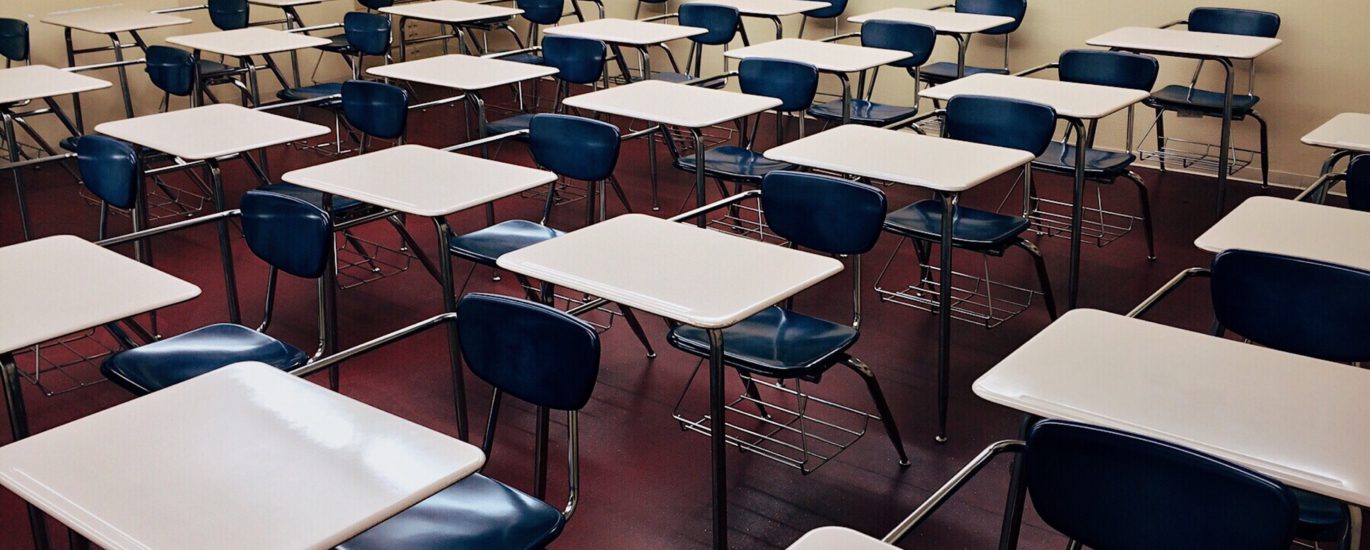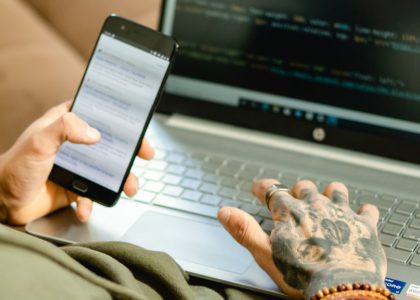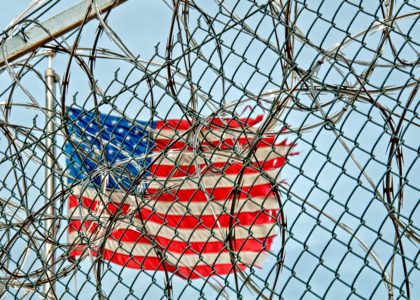By: Tanya Kumar
The onset of the COVID-19 pandemic had a dramatic effect on the dynamic of prison systems in the United States. Quarantine procedures meant that inmates were denied even the limited contact with the outside world and visitors which had been available to them before; at the same time, infection rates within prison outpaced those outside by orders of magnitude. “Jails and prisons have become petri dishes for this pandemic,”” said California state representative Sydney Kamlager as the first wave of the pandemic hit its peak in summer 2020. Two years later, while the prison system has been able to slow the spread of disease in the wake of vaccine availability and improved procedures, it has been difficult for many programs to resume in-person teaching – something Project Reclass and other educational programs have utilized as an important component in their curriculums.
The California Department of Corrections, well known for its rehabilitative education programs, suspended in-person classes. The Texas Department of Criminal Justice, whose Windham School District was one of the first and largest programs of its kind, likewise suspended visitation. In Connecticut, quarantine restrictions provided some leeway for the employee-taught GED classes their system offers, but volunteers offering postsecondary education were likewise cut off. More specifics on the initial and ongoing state-by-state impact on educational programs can be found in the CLASP (Center for Law and Social Policy) report “Coronavirus Prison Education Disruption”, available on their website.
In spite of this, individual programs gamely tried their best to adapt. The mode of educator-to-student interaction and the ways in which students are still able to engage with course content have varied among programs.
Programs and Their Diverse Adjustments
The Education Justice Project, operated by the University of Illinois, provides a variety of courses, resources, and scholarships to inmates. As part of their adjusted pandemic procedures, correctional centers which EJP works with allowed the program to drop off assignments along with blank paper to write on. Students completed the work and then, after a two-week interval, project staff picked it up, graded it, and dropped off the graded work two weeks after that. Unfortunately, that meant that if students in prison had a question for a professor, it could take up a month to hear back. This avenue of correspondence course has been suspended following a spike in case rates; in response, EJP began creating instructional videos available to anyone in the prison through institutional TV channels. “Many of the instructors are formerly incarcerated, they might have trouble getting clearance to teach within the prison itself,” says director Rebecca Ginsburg, “but now they can share their wisdom and their perspectives via the video.”
California-based program The Last Mile, which teaches technology skills through module completion and live instruction and boasts a remarkable 0% recidivism rate, was able to shift to remote live education due to the accommodation of prison systems willing to provide access to streaming. “Everything is live, but is done remotely,” explains Jason Jones, a former student who has gone on to become an instructor with Last Mile. This has allowed classes to continue throughout the worst of the pandemic, though Last Mile says they have had to deal with glitches, lockdowns, and other obstacles.
The Prison Education Project, which operates in 25 correctional facilities in California and nearby states, has conducted a pilot study to carry out programming using Zoom, with the help of existing wireless access points installed throughout the facilities. The use of WiFi in instruction has prompted security concerns due to the unsecured nature of wireless internet connections, so this pilot study has helped to demonstrate the feasibility of such an endeavor. The Tennessee Higher Education in Prison Initiative submitted a similar proposal which was denied by their state’s department of corrections, but they hope to carry out remote education in facilities which already have computer labs.
The Limitations of Remote Learning
While some programs shifted some of their content to in-cell individual work that could be completed outside of a class environment or video-based student-paced instruction, concerns abound about the loss of the classroom experience and what this meant for students. “A major component of college in prison programs is the actual interactions they have with professors and with their peers. And now with coronavirus, a lot of institutions are not going into prisons any longer… It has a lot of unintended consequences. It’s going to impact the culture of facilities”, commented Monique Ositela, a senior analyst on prison education at social think tank New America.
These sentiments are mirrored by other experts in the field. “The role of a higher education in prison program was never just the classroom,” said Mary Gould, the director of the Alliance for Higher Education in Prison. It is a role technology can supplement, not replace.
Another area for concern is that incarcerated students with more financial resources will have more access to educational resources. Tech companies charge prisoners for video calls, internet, emails, and accessing e-reader content; the more of a curriculum that is dependent on online content, the more likely it is to be inaccessible to inmates who can’t afford it, effectively becoming restricted only to those who have cash.

What Does This Mean for Reclass?
As subsequent waves of the pandemic continue to disrupt any planned return to normalcy, Project Reclass has been steadfastly developing a new course curriculum for use in prison education, to be implemented when permissions are obtained and circumstances allow. Our new curriculum focuses on strengthening the reading and writing skills of students, which will empower them to create resumes, write cover letters, and seek employment upon release as well as perform related tasks successfully in their new jobs or ongoing education. We are hopeful that, like the other programs discussed in this post, Reclass will be able to adapt to the turbulence of the pandemic and provide enriching experiences to students in whatever capacity possible, but in-person education and direct interaction between students, their peers, and their instructors are invaluable components of education, and we hope to be able to incorporate it again soon.
[1] Johnson, C. (2021, July 19). Lessons learned from prison education interruption during pandemic. CLASP. Retrieved February 2, 2022, from https://www.clasp.org/publications/fact-sheet/lessons-learned-prison-education-interruption-during-pandemic
[2] Montenegro, D. A. (1AD, January 1). Reaching at-risk student populations during a pandemic: The impacts of covid-19 on prison education. Frontiers. Retrieved February 2, 2022, from https://www.frontiersin.org/articles/10.3389/fcomm.2021.604963/full
[3] Armstrong, M. (2020, May 4). Moving classes online is hard-especially in prisons. Slate Magazine. Retrieved February 2, 2022, from https://slate.com/technology/2020/05/remote-learning-prisons.html
[4] Rogers, J. (2022, January 27). From Better Government Association: Covid-19 again hits Illinois Prisons. Capitol News Illinois. Retrieved February 2, 2022, from https://capitolnewsillinois.com/NEWS/from-better-government-association-covid-19-again-hits-illinois-prisons
[5] Medlin, P. (2021, April 14). Covid shut down most prison education programs. Here’s how incarcerated students have kept learning. Northern Public Radio: WNIJ and WNIU. Retrieved February 2, 2022, from https://www.northernpublicradio.org/education/2021-04-13/covid-shut-down-most-prison-education-programs-heres-how-incarcerated-students-have-kept-learning
[6] Bader, E. J. (2021, July 12). How a prison program is encouraging lifelong learning. The Progressive Magazine. Retrieved February 2, 2022, from https://progressive.org/latest/prison-program-lifelong-learning-bader-210712/
[7] Kreighbaum, A. (2020, April 3). Colleges behind bars are adjusting to coronavirus constraints. Bloomberg Government. Retrieved February 2, 2022, from https://about.bgov.com/news/colleges-behind-bars-are-adjusting-to-coronavirus-constraints/
The Author

Tanya Kumar is an aspiring environmental scientist who completed her undergraduate education at the University of Maryland and is preparing for graduate school. She currently teaches in Maryland and spends her spare time writing, drawing, and playing with her pet rats.





